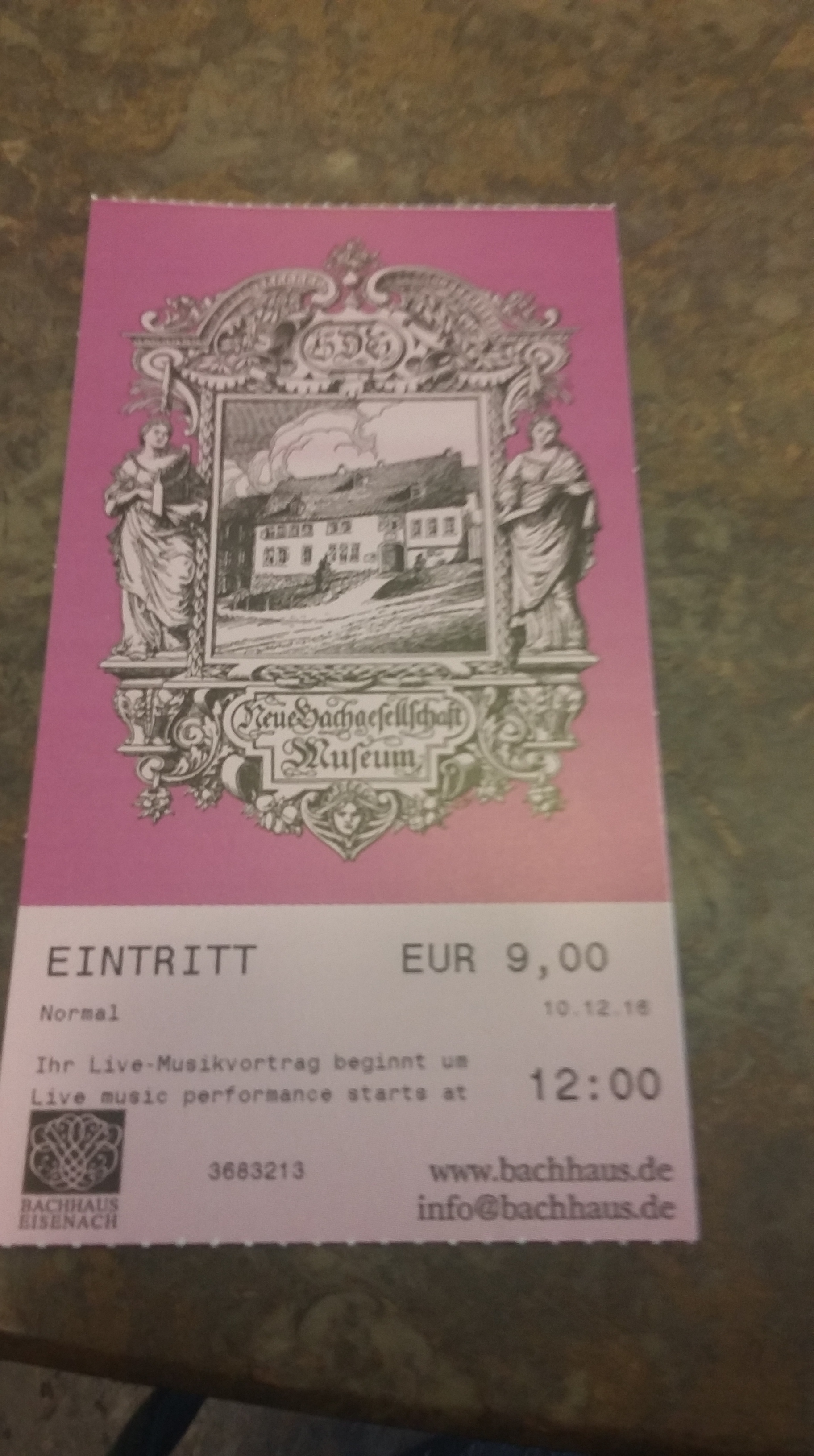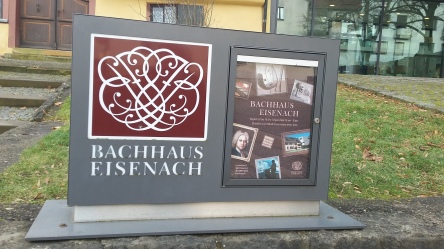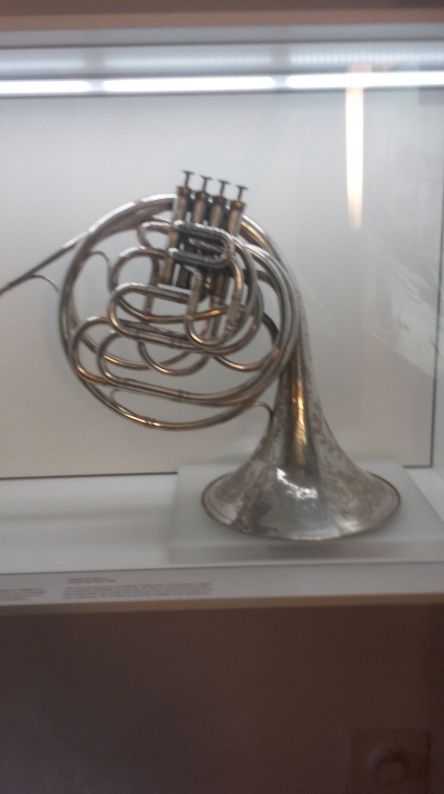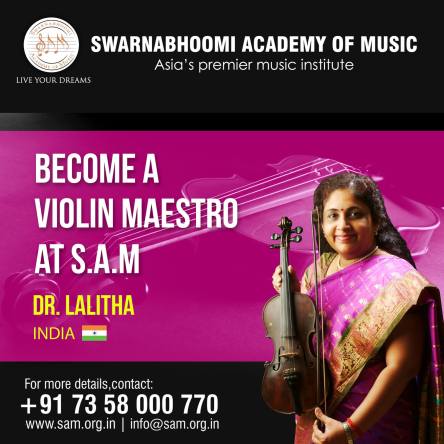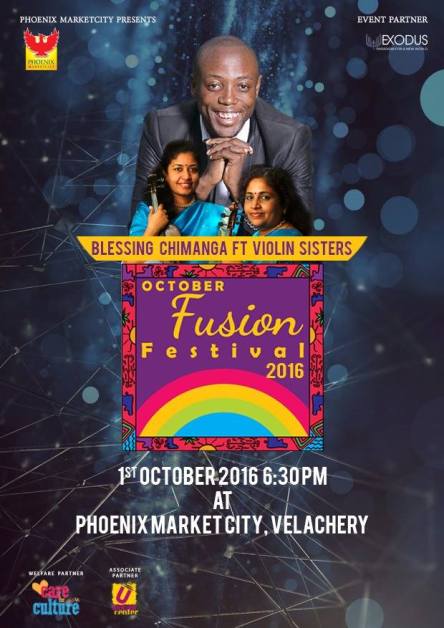A MUSICAL PILGRIMAGE – BACHHAUS
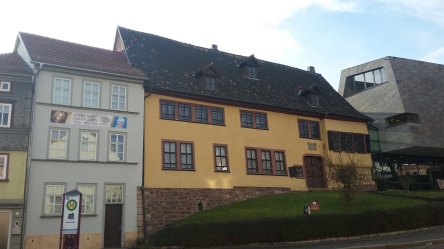
I visited the Bach House at Eisenach which is a museum dedicated to Johann Sebastian Bach. We were invited by the big monument of the great composer in front of the Museum by sculptor Adolf von Donndorf that was unveiled in 1884. It is heard that the contributions for erecting the monument of Bach in the front entrance of the Bachhaus came from Joseph Joachim, Clara Schumann, Johannes Brahms Franz Liszt and Britainʼs Queen Victoria.
The Bach family was a very great musical family and Bach was born on 21 March 1685 in Eisenach to German musician Johann Ambrosius Bach and Maria Elisabeth Lammerhirt . He was baptized in St Georges Church in Eisenach. It is learnt that he lived for the first 10 years of his life at Eisenach. Bach learnt to play string and wind instruments from his father at an early age. Johann Sebastian Bach attended the Latin school from 1692 until 1695, and joined the school choir at Eisenach.
The world’s first Bach Museum known as the Bachhaus was opened in 1907 by the Neue Bachgesellschaft that had collections relating to the great composer and his works. This house turned into a museum which is still the undisputed birth place of Bach was built in 1456 having a bedroom, living room and kitchen that are furnished with the original furniture that was used during the time of the great composer.
There is a room that is modeled to resemble Bach’s composing room as it looked in the Leipzig School of St. Thomas which is kept along with the instrument Clavichord.
The Bachhaus has over 250 original exhibits that relate to Bach’s life and his music. And has over 400 instruments apart from 28 original baroque musical instruments that are on display. The Bachhaus also has exhibits, multimedia art works apart from listening facilities for everyone. Visitors can hear Bachʼs music sitting in the suspended bubble chairs.
The Bachhaus houses the photographs of the Bachhaus when it was opened in 1907 apart from the portrait of Bach painted by the Berlin painter Johannes Heisig in the foyer. The entrance to the Bachhaus has the original door taken from Bach’s apartment in the St Thomasʼs School in Leipzig where Bach and his family walked through it.
There is a glass harmonica allegedly owned by the theologian Friedrich Schleiermacher dating around 1775 that is housed at the Bachhaus. This is a type of musical instrument that uses a series of glass bowls in several sizes where the sound is produced by means of friction . Many composers including Wolfgang Amadeus Mozart, Ludwig Van Beethoven, Richard Strauss have composed works for the glass harmonica.
The trumpet Violin is a specialty of the Bachhaus where the violin with a built-in natural trumpet built in around 1717 is exhibited. It is learnt that when Bach was the music director at the court of Kothen two of these instruments were available to him.
According to Conrad Freyse, director of the Bachhaus, “In the Bachhaus, music should never be silent”, hence some instruments are still played for all visitors today.
One of the special features of the Bachhaus is the short performance in the instrument hall. We were guided by a volunteer who spoke both in German and in English describing about each instrument and performing them. The five main instruments that were covered included a clavichord (1770), the Silbermann spinet (c. 1760), the harpsichord (1705, copy) and the two organs that were built around 1650 and around 1750). One of them is a small, portable organ from Kleinschwabhausen near Weimar which is surmised that Bach had played on it when he was the court organist at Weimar from 1708 to 1717 and which has been confirmed by his successor. To operate the bellows usually the organ treader or a calcant is necessary.
The Bachhaus has various collections of instruments used by Bach in his various compositions. The stringed instruments the violin, Viola, Cello and Double Bass were the basis for Bach’s ensemble. Other stringed instruments used by Bach include the seven-stringed viola da gamba, a five-string violoncello piccolo, a viola d’amore with six playing strings and six resonating strings, and the violin piccolo, stringed instruments in different sizes, shapes, pitches and with any number of strings were used by Bach in his works. Along with his friend Johann Christian Hoffman, an instrument maker, Bach developed a 5 stringed instrument called as the viola pomposa that resembled a small cello but was played on the arm and not kept between the knees.
There is also a lute that is featured in the Bachhaus. In Bach’s time the lutes with any number of strings with various pitches were very popular and common.
The brass section along with Timpani that were used in Bach’s works is exhibited here. The brass section includes a collection of trumpets in various designs, sizes ranging from long, short, slide and circular ones. These instruments had no valves and the tonality was determined by the blowing techniques of the musicians. Bach used the horns having small, medium and large coils in his works. He used the Cornett and Sackbut ensemble to strengthen the voice parts. Bach used a pair of timpani music for particular festive occasions. These instruments are also part of the various collections.
Amongst the wood wind instruments are the recorder, transverse flute, oboe, and bassoons that were used during Bach’s period. Bach used recorders in all sizes and pitches while from around 1720 he started using the flute more in his works. Bach’s favourites were also the Oboes. In Bach’s time the instrument chorist – Fagott or the bass dulcian started to be gradually being replaced by the bassoon.
Bachʼs musical career from his studies and the various positions he held is being portrayed with an illustration or an object or an engraving, like an old shoe depicts Bach’s journey by foot for 300 km Ohrdruf to Lüneburg which is in the upper floor of the special exhibition rooms.
In the “Town Musiciansʼ Room” exhibits of the conventional instruments played by the musicians of Eisenach led by Bachʼs father Ambrosius are featured that includes a violin dating from 1575.
Bach sang in the school choir and here at the Bachhaus some of Bachʼs school materials are displayed. There is also an exhibit of the so-called Bach spectacles believed to have been worn by the great composer himself.
The Bachhaus also displays vintage pieces of pottery, shoe leather, a candle holder, a drinking mug and a cowbell from 1688 that were found in the Bachhaus garden. The kitchen with the various utensils that was found in the Bach House garden is also exhibited.
A reference library consisting of approximately 5,500 volumes of literature relating to the great composer, practical and theoretical sheet music, his instruments and his works are part of the Bachhaus collections. There is also an original Bach manuscript that is displayed which is the continuo part of the cantata Alles nur nach gottes willen, BWV 72.
There is a `walkable composition’, having a 180 degree screen where the story of Bach iconography, the first editions like the Art of Fugue, and a number of audio samples are featured. Here the musical techniques in Bach’s works like polyphony, fugue, basso continuo, tuning , Bach’s parody technique, organ music, cantatas, passion music, secular cantatas, sonatas and suites, concertos, overtures, motets and and other works are explained with examples.
For children there is a special childrens corner which has among others the organ puzzle showing Bach’s first organ in Arnstadt.
Under the title “How We See Bach”, the Bach iconography is explained along with the details of the excavation of Bach’s remains and the reconstruction of how Bach looked like using his skull which was the first three-dimensional forensic facial reconstruction in the history of medicine.
Visitors can compare different recordings and interpretations of the same Bach’s cantata, “Nun komm, der Heiden Heiland” (BWV 61), on a mixer unit.
The exhibition that has won several awards in the Bachhaus was designed by Atelier Brückner from Stuttgart.
A wonderful musical pilgrimage to remember.




